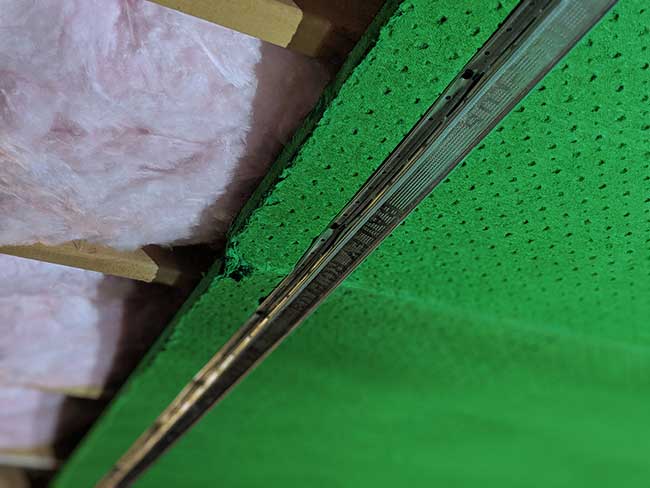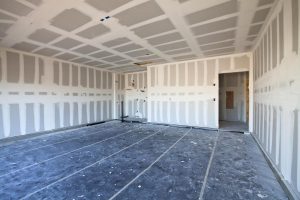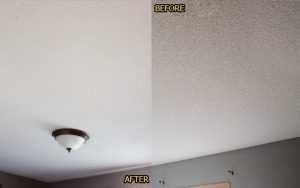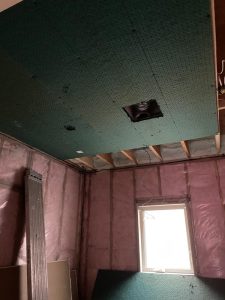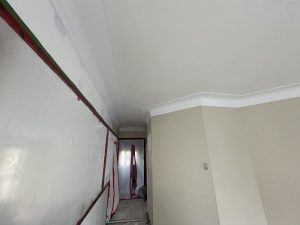Drywall soundproofing, also known as acoustic drywall or soundproof drywall, is a specialized construction technique aimed at reducing noise transmission between spaces. This innovative approach to soundproofing has gained popularity due to its effectiveness in improving the quality of life, whether in residential or commercial settings. In this comprehensive article, we will explore how drywall soundproofing can significantly enhance one’s life by addressing the science behind sound transmission, the principles of drywall soundproofing, various techniques, materials, and its multifaceted benefits.
Section 1: The Impact of Sound in Our Lives
Before delving into the specifics of drywall soundproofing, it’s essential to understand the profound impact of sound on our lives. Sound is a fundamental aspect of human perception, communication, and well-being. It can evoke emotions, create atmospheres, and facilitate understanding. However, when sound becomes noise, it can have detrimental effects on our physical and mental health, disrupt our daily routines, and strain our relationships.
1.1 Sound and Noise Distinction
Sound is a form of energy that travels in waves through a medium, typically air. When these sound waves reach our ears, they are converted into electrical signals that our brains interpret as sound. Sound is a natural and often pleasant aspect of our environment.
Noise, on the other hand, is any unwanted or disruptive sound. It can be characterized by its loudness, duration, and the context in which it occurs. Noise pollution, resulting from urbanization, industrialization, and modern living, has become a pervasive issue in today’s world.
1.2 Sources of Noise Pollution
Noise pollution can originate from a wide range of sources, including:
-
Transportation Noise: Road traffic, railways, airports, and marine vessels are significant contributors to noise pollution. The constant hum of vehicles and loud transportation systems can be a major source of urban noise.
-
Industrial Activities: Factories, construction sites, and heavy machinery generate high-intensity noise. Industrial noise can be persistent and disruptive, affecting nearby residents and workers.
-
Community and Neighborhood Noise: Noise from neighbors, household appliances, and entertainment systems can be disruptive, leading to disturbances in residential settings. Excessive noise in neighborhoods can strain relationships and negatively impact quality of life.
-
Commercial Establishments: Offices, restaurants, and retail stores often have high noise levels due to conversations, equipment, and music. The cumulative noise from commercial spaces can be a source of stress and discomfort for patrons and workers.
-
Recreational and Entertainment Venues: Sports arenas, concert halls, and theaters can generate intense noise levels during events. While this is expected in these settings, it can be disruptive to those living in proximity to such venues.
1.3 The Impact of Noise on Quality of Life
Noise pollution can have a profound impact on our lives, leading to various issues, including:
-
Sleep Disturbances: Noise can interfere with the ability to fall asleep and stay asleep, leading to sleep deprivation and its associated health issues.
-
Stress and Anxiety: Chronic exposure to noise, especially at high levels, can trigger stress and anxiety. It can elevate cortisol levels, contributing to a range of health problems.
-
Hearing Damage: Prolonged exposure to loud noise can lead to hearing loss or tinnitus (ringing in the ears), affecting an individual’s overall quality of life.
-
Communication Challenges: Noise can make it difficult to engage in conversations, particularly in busy public spaces or within homes with poor sound insulation.
-
Reduced Concentration: Noise can disrupt concentration and productivity, making it challenging to focus on tasks at work or school.
-
Strained Relationships: Noise disturbances in shared living spaces can lead to conflicts with neighbors, family members, or roommates.
Section 2: Understanding Drywall Soundproofing
Given the adverse effects of noise pollution on our quality of life, soundproofing has emerged as a vital solution. Among the various soundproofing techniques, drywall soundproofing has gained recognition for its effectiveness and practicality. Acoustic drywall is designed to reduce noise transmission through walls, ceilings, and floors. It is constructed using specialized materials that absorb, reflect, or block sound waves, thereby minimizing noise transfer between spaces.
2.1 Key Principles of Drywall Soundproofing
Drywall soundproofing operates on the following key principles:
a. Mass:
One of the fundamental principles of soundproofing is that heavier materials are better at blocking sound. Acoustic drywall is typically denser and heavier than standard drywall, which enhances its sound-blocking capabilities.
b. Damping:
Sound waves vibrate as they travel through a medium. By incorporating damping materials within the drywall, these vibrations are absorbed and converted into heat energy, reducing the transmission of sound.
c. Decoupling:
Decoupling involves creating a gap or separation between layers of drywall. This gap serves as an air pocket, which helps to disrupt the direct transmission of sound. This decoupling technique is often used to soundproof walls, where two layers of drywall are installed with an air gap in between.
2.2 Techniques and Materials in Drywall Soundproofing
Various techniques and materials are used in drywall soundproofing to achieve effective noise reduction. These may include:
a. Mass-Loaded Vinyl (MLV):
Mass-Loaded Vinyl is a heavy, flexible material that can be added to the existing drywall to increase its mass. It effectively blocks sound transmission and is often used in combination with other soundproofing techniques.
b. Resilient Channels:
Resilient channels are metal or spring-loaded channels attached to the wall studs. Drywall is then mounted on these channels, creating a separation between the wall and the structure. This reduces sound transmission through structural vibrations.
c. Soundproof Drywall Panels:
Specialized soundproof drywall panels are designed with enhanced soundproofing qualities. They incorporate materials like gypsum, which has a higher density than standard drywall, to block sound effectively.
d. Acoustic Insulation:
Acoustic insulation materials can be placed within wall cavities or between drywall layers. These materials absorb sound and reduce sound transmission. Fiberglass and mineral wool are commonly used insulation materials.
e. Green Glue:
Green Glue is a damping compound that is applied between layers of drywall. It converts sound energy into heat, effectively reducing sound transmission.
Section 3: Applications of Drywall Soundproofing
Drywall soundproofing can be applied to various elements within a building, including walls, ceilings, floors, and even doors. Its versatility allows for its implementation in a wide range of settings, leading to quieter, more comfortable, and more peaceful spaces.
a. Residential Applications:
1. Bedrooms:
A peaceful and quiet bedroom is essential for restful sleep. Drywall soundproofing can significantly reduce the intrusion of external noise, such as traffic or loud neighbors, leading to improved sleep quality and overall well-being.
2. Home Offices:
In the era of remote work and online meetings, a home office should be a quiet and distraction-free space. Drywall soundproofing can create a conducive environment for concentration and productivity.
3. Shared Living Spaces:
Apartments and multi-family housing often require soundproofing between units to maintain privacy and harmonious relationships among neighbors. It prevents the transmission of sounds like conversations and footsteps.
In conclusion, drywall soundproofing represents a transformative and effective solution for mitigating the negative impacts of noise pollution in our daily lives. Sound, while an essential aspect of our existence, can become noise, causing disturbances that affect our well-being, productivity, and relationships. Drywall soundproofing is not merely a construction technique; it is a gateway to a quieter, more peaceful, and higher quality of life.
By understanding the key principles of soundproofing, including mass, damping, and decoupling, and by implementing techniques and materials such as Mass-Loaded Vinyl, resilient channels, acoustic insulation, and specialized soundproof drywall panels, individuals can tailor their soundproofing efforts to specific needs and spaces. Whether it’s a tranquil bedroom, a productive home office, or harmonious shared living spaces, drywall soundproofing allows us to reclaim control over our auditory environment.
The applications of drywall soundproofing extend to residential settings, where it improves the quality of sleep, enhances concentration, fosters privacy, and fosters healthier relationships among neighbors and family members. It is equally vital in commercial settings, contributing to the well-being and productivity of workers in offices and the comfort and enjoyment of patrons in restaurants and entertainment venues.
As we continue to grapple with the challenges of noise pollution in our modern world, drywall soundproofing stands as a testament to human ingenuity and a commitment to the pursuit of a quieter and more serene life. Its benefits are manifold, as it allows for peaceful sleep, reduced stress, better mental health, enhanced concentration, and improved relationships. In our quest for healthier and happier lives, soundproofing with drywall is a significant step towards achieving that goal.
In essence, drywall soundproofing is a testament to our ability to take control of our sonic environment, creating spaces that offer peace and tranquility amidst a noisy world. It is a testament to the belief that our quality of life can be significantly enhanced through the application of science, innovation, and thoughtful construction techniques. The impact of drywall soundproofing is profound, as it not only transforms the physical spaces we inhabit but also positively influences our overall well-being.

